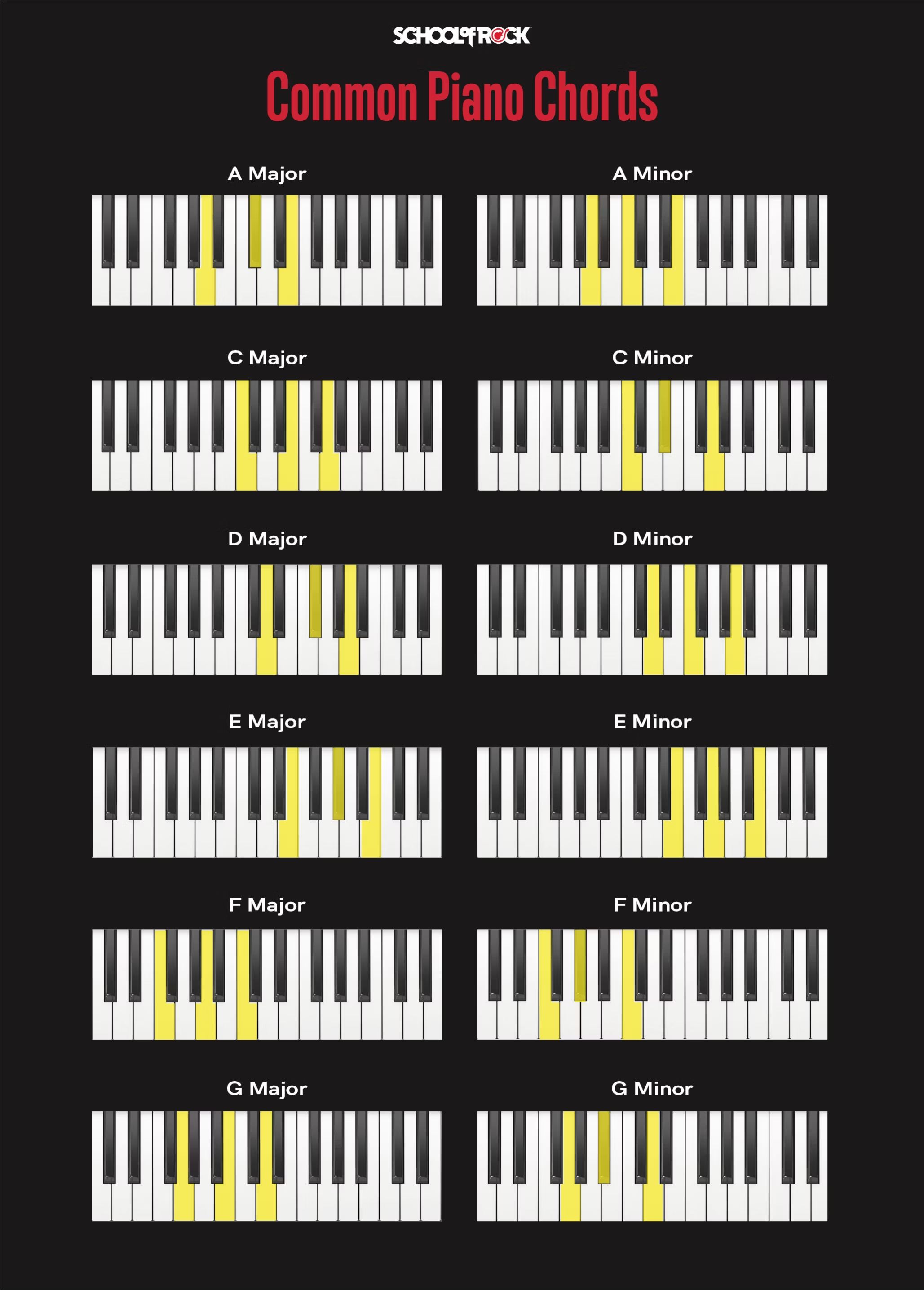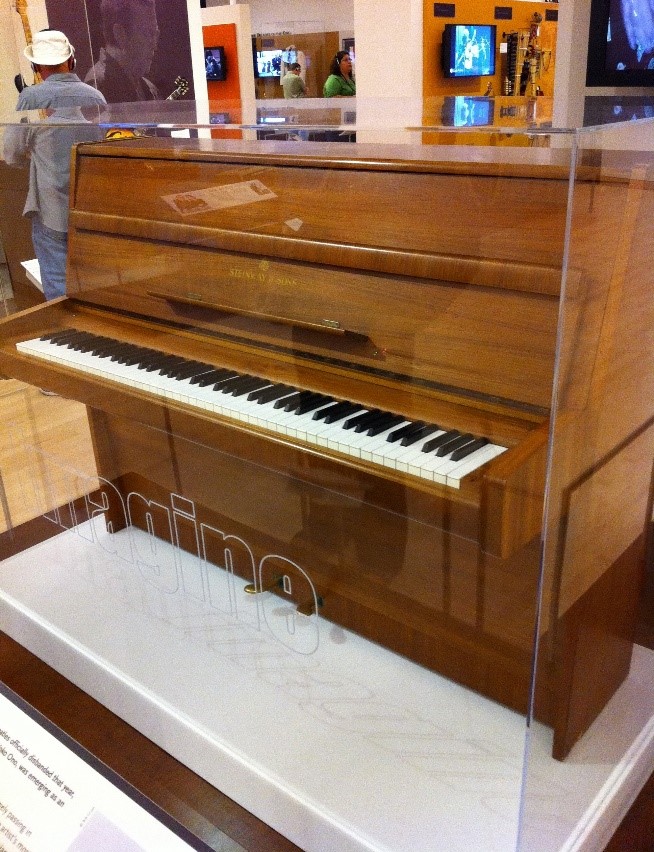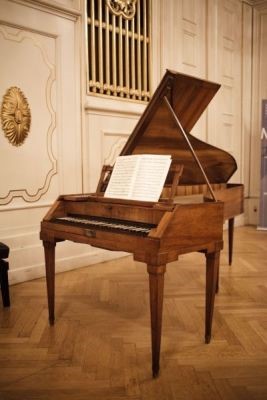The piano enjoys widespread popularity in the United States, Japan, and South Korea. These countries have robust classical and contemporary music scenes where the piano plays a central role.
As a versatile instrument pivotal in musical education, performance, and composition, the piano has found a resonant place in the cultural landscapes of these nations. Known for its expressive range and adaptability, the piano has charmed audiences and inspired musicians for centuries.
From the thunderous concertos of classical maestros to the soft melodies in a jazz club, the piano’s prevalence in various music genres has cemented its status as a beloved instrument worldwide. Its prominence in music institutions and public life, along with the global appreciation of piano-based music, underscores its universal appeal and enduring popularity.

Credit: www.schoolofrock.com
The Global Influence Of The Piano
The piano has had a profound impact on music and culture. This instrument resonates with people worldwide. From the grandest concert halls to intimate living room performances, the piano’s versatility makes it broadly popular.
Historical Context
The piano’s journey began in 1700s Italy. It spread across Europe and beyond in no time. Composers like Mozart and Beethoven composed timeless pieces. These works cemented the piano’s place in classical music.
- Invention: The piano appeared in the early 18th century.
- Spread: Rapid expansion followed through Europe.
- Iconic Composers: Virtuosos like Chopin and Liszt elevated piano music.
Current Trends In Piano Popularity
Pianos remain a staple in music education. Technology has transformed how we engage with this instrument. Digital pianos and keyboards expand access.
| Region | Popularity Level |
|---|---|
| North America | High |
| Europe | High |
| Asia | Increasing |
- Music Education: Pianos dominate music classrooms worldwide.
- Digital Shift: Electric pianos and apps make learning easier.
- Pop Culture: Pianos feature in popular music and media.
Surveying The Popularity: Countries Leading The Way
The piano’s melodic tones echo around the globe, finding a special place in the hearts of music enthusiasts. Different countries show varied levels of devotion to this grand instrument. Let’s delve into those front-runners where the piano is not just an instrument but a cultural pillar.
China’s booming piano marketChina’s Booming Piano Market
China presents a mesmerizing case of a burgeoning piano market. Rapid economic growth fuels the demand for pianos. Here’s a snapshot of the market’s vitality:
- Massive production: China leads as the world’s largest piano producer.
- Soaring sales: Chinese families invest in pianos to enhance education.
- Huge learning base: Millions of children are taking piano lessons right now.
The United States’ Enduring Love For The Piano
The United States holds a rich tradition of piano appreciation, influencing genres like jazz, blues, and classical. Distinguished institutes like Juilliard and Berklee train future piano maestros.
Home pianos are a statement of cultural sophistication. Many Americans grow up with piano lessons, shaping the country’s music landscape.
European traditions and modern inclinationsEuropean Traditions And Modern Inclinations
Europe, with its deep musical roots, remains a land where classical and contemporary piano music thrives. Iconic manufacturers like Steinway and Bösendorfer maintain the prestige of European craftsmanship.
Festivals and concerts across Europe showcase the piano’s prominence. Music education here often includes piano training, reflecting a deep-seated respect for the instrument.
Cultural Impact And The Piano
The piano boasts a vast and vibrant history. It intertwines with the tapestry of human expression. From royal courts to jazz clubs, this instrument has left an indelible mark. Its versatility spans genres and continents, shaping the soundtrack of cultures worldwide.
Classical Music And Pianos
Classical music is synonymous with the piano. Inspirational figures like Beethoven and Chopin composed timeless pieces for this instrument. Its range can mimic an orchestra, making it ideal for both solo performances and ensemble work.
- Concertos: Pianos star in these impactful works.
- Sonatas: They highlight the instrument’s expressive capacity.
- Recitals: Talented pianists showcase their skill on the world stage.
Pianos In Contemporary Music Genres
The piano transcends time. It adapts to contemporary sounds with ease. Its presence in modern genres is unmistakable.
- Pop: Aiding in catchy hooks and ballads.
- Jazz: For intricate improvisations.
- Rock: Adding a layer of depth to powerful anthems.
Today’s icons like Elton John and Alicia Keys lead the way. They blend piano sounds into the ever-evolving music landscape.
The Piano In Film And Media
The piano’s emotive power enriches films and media. It sets moods and underscores critical moments.
| Movie Genre | Piano’s Role |
|---|---|
| Romance | Drives emotional storylines |
| Horror | Heightens tension |
| Drama | Amplifies character depth |
Iconic soundtracks owe much to piano arrangements. Think of “The Heart Asks Pleasure First” from The Piano. Television shows often rely on piano scores for memorable themes.
Education And Institutional Drivers
The piano resonates with elegance and sophistication, striking chords in various parts of the world. But what perpetuates its popularity? Often, it’s education and institutional support paving the way.
Music Schools And Their Influence
Music schools stand as beacons that spread the piano’s allure. Aspiring pianists flock to these institutions, keen on mastering the instrument. Let’s dive into how they bolster the piano’s prominence:
- Curriculum Focus: Many music schools offer specialized piano programs. These immerse students in technique and theory from a tender age.
- Renowned Instructors: Skilled pianists often teach at these schools, passing on their knowledge and passion.
- Performance Opportunities: Schools routinely host recitals and concerts. These platforms showcase student talent, stoking community interest in the piano.
Governmental Support For Piano Education
Government initiatives can dramatically influence piano education. Recognizing this power, numerous countries have integrated piano classes into public school programs. Some even invest in national music plans. Below are key aspects of governmental support:
| Government Action | Impact |
|---|---|
| Funding for Arts | Schools can purchase pianos and pay teachers. |
| Scholarships | Talented students get financial support for advanced training. |
| Public Events | Encourages community engagement with the piano. |
Piano Competitions And Their Role
Piano competitions ignite excitement and aspiration among both players and fans. Young pianists work tirelessly for such events. Here’s a brief on their ripple effect:
- Spotlight Talent: Competitions often discover new piano prodigies.
- Advance Careers: Winners often enjoy boosted recognition and opportunities.
- Inspire Others: Budding pianists get motivated to enhance their skills.
The Economics Of Piano Popularity
Understanding where the piano is most popular takes us beyond concert halls and music schools. It leads us into the fascinating world of economics. Let’s dive into how piano manufacturing, sales, and innovative digital technologies contribute to this instrument’s global presence.
Piano Manufacturing And Sales
Piano manufacturing is a telling sign of an instrument’s popularity. Major brands such as Steinway, Yamaha, and Kawai compete to produce the finest pianos, influencing market dynamics. Diverse models range from upright pianos for beginners to grand pianos for professionals.
- High-end grand pianos are often seen as luxury items
- Affordable uprights cater to wider markets
- Innovative features attract modern buyers
| Region | Sales (in millions USD) |
|---|---|
| Asia | 250 |
| North America | 150 |
| Europe | 100 |
The Second-hand Piano Market
The second-hand market makes pianos accessible at lower costs. Many prefer pre-owned pianos for their mature sound and historical value. Dealers and auction houses play a key role in appraising these instruments.
- Pre-owned uprights are popular for beginners
- Vintage grands attract collectors and artists
- Online platforms widen the reach of the second-hand market
The Role Of Digital Pianos
Advancements in technology introduced digital pianos to the scene. These offer varied sounds and features at affordable prices. They’re light, portable, and require less maintenance than traditional pianos.
- Variety of built-in sounds and learning tools
- Headphone compatibility for silent practice
- Integration with computers and mobile apps

Credit: www.cocoweb.com
Famous Pianists And Their Influence
The ivory keys of the piano have echoed through time, shaping history with melody. Famous pianists wield this influence, inspiring generations with their talent. Their music touches souls, crosses borders, and sets the stage for cultural dialogues. Let’s delve into the lives and legacies of these piano virtuosos.
Classical Piano Icons
Order in a court of kings or a tender note in a quiet room, classical pianists are timeless. They compose reality from dreams, their fingers dancing over the piano keys.
- Ludwig van Beethoven: Deaf yet undeterred, he gave the world his Moonlight Sonata.
- Wolfgang Amadeus Mozart: A child prodigy, he played for royalty, leaving behind a vast and diverse body of work.
- Franz Liszt: His technical prowess and heartrending compositions earned him the title of ‘rockstar’ of the 19th century.
Trendsetting Contemporary Pianists
The current crop of piano maestros fuse old and new, thrilling audiences worldwide. They mold soundscapes that redefine genres, making what’s old new once more.
- Lang Lang: With dexterity and passion, he bridges East and West, enchanting both with his performances.
- Yiruma: His melodies like River Flows in You, resonate with listeners, evoking deep emotions.
- Hiromi Uehara: She blends jazz, classical, and rock, her energetic performances captivating music lovers.
The Social Media Effect
Social media platforms burst with piano covers and tutorials. They serve as modern stages for pianists to share their art.
| Name | Platform | Subscribers/Followers |
|---|---|---|
| Kyle Landry | YouTube | Over 1 Million |
| Rousseau | YouTube | Over 2 Million |
| Tiffany Poon | YouTube | Over 300k |
Pianists online inspire millions. They prove daily that music truly knows no bounds.

Credit: www.cocoweb.com
Does the Popularity of Pianos Affect the Demand for Piano Tuners Worldwide?
The worldwide piano tuner count is indeed affected by the popularity of pianos. As more people around the world invest in pianos, the demand for professional piano tuners increases. This trend is seen in various regions and countries, highlighting the correlation between piano popularity and the need for skilled piano tuners.
Are Baldwin Pianos Popular in Certain Regions?
In various regions, the popularity of Baldwin pianos remains strong, particularly among music educators and enthusiasts. The exceptional craftsmanship and sound help foster a deep appreciation for music. Many choose these instruments for their renowned baldwin piano quality and value, making them a preferred choice in both homes and studios.
Frequently Asked Questions Of Where Is The Piano Most Popular
When Was The Piano Most Popular?
The piano reached peak popularity during the late 19th and early 20th centuries.
Which Country Has The Best Pianists?
There is no definitive answer to which country has the best pianists, as talent is widespread globally and subjective to individual taste. Countries like Russia, Poland, and the USA are renowned for producing highly skilled pianists.
Which State Has The Most Pianos?
There is no definitive data to determine which state has the most pianos. Piano ownership varies and is not typically tracked by state.
Where Are Pianos Played?
Pianos are played in concert halls, music schools, recording studios, homes, and as accompaniment in churches and at events. They are versatile instruments found across various settings.
Conclusion
Exploring the piano’s popularity reveals its global reach and cultural impact. From the jazz clubs of America to the concert halls of Europe, this instrument resonates with diverse audiences. Whether you’re a player or an enthusiast, the piano’s universal appeal is undeniable.
Embrace its music, and join a worldwide community of piano lovers.
